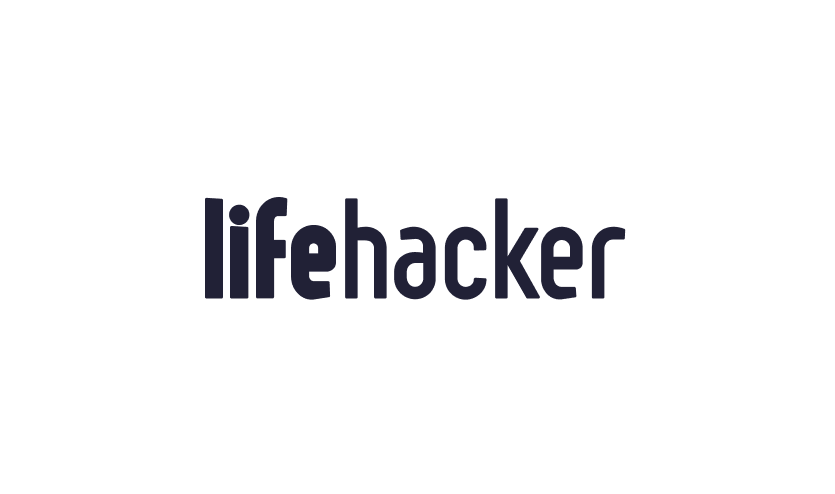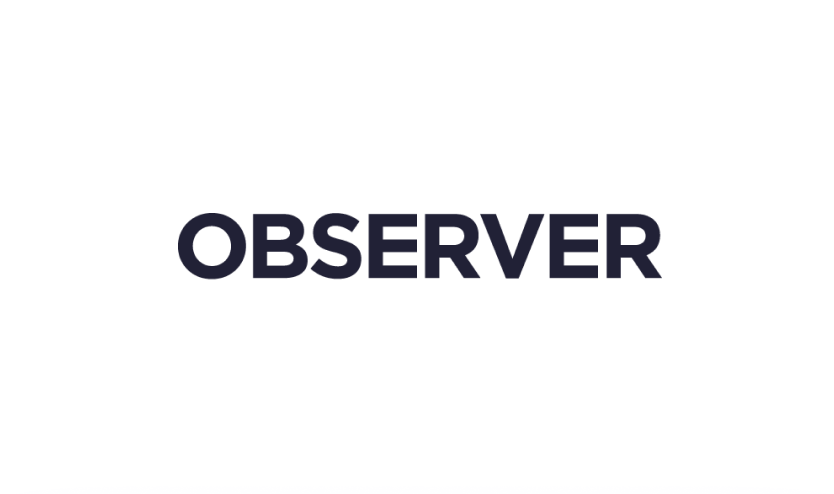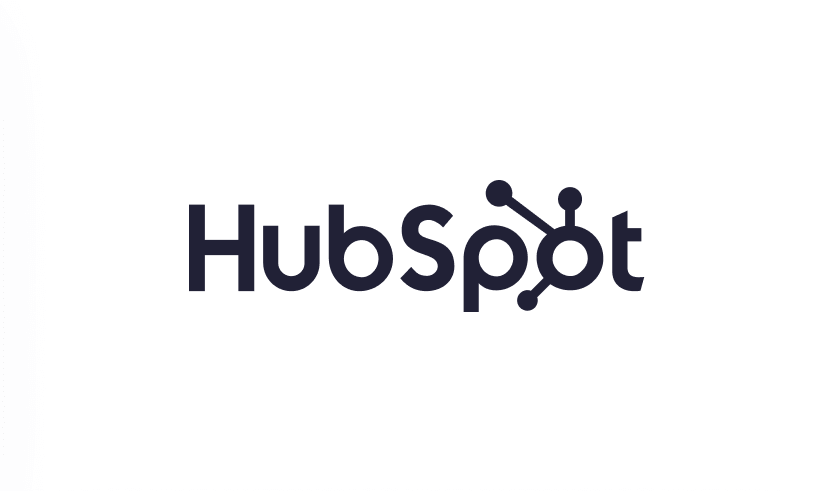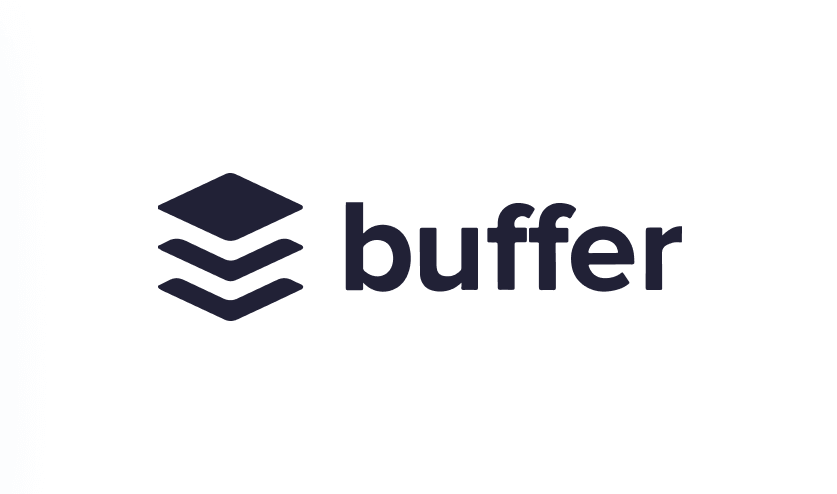Ecommerce Marketing Automation That Actually Grows Revenue
Why Most Ecommerce Automation Falls Short (And What Works)
Let’s be honest: just having ecommerce marketing automation doesn't automatically print money. I see so many online stores set up a few basic email flows, check it off their to-do list, and then wonder why their revenue isn’t taking off. They fall into the trap of thinking automation is just a machine for blasting out emails. The reality is, it’s a tool for building relationships at scale, and that distinction makes all the difference.
The biggest reason most automation efforts don't deliver is that they're treated as a one-way street. A brand sends a generic “You left this in your cart!” email and just hopes for a sale. This completely ignores the why. Why did the customer pause? Was it the shipping cost? Were they just window shopping? Did they have a question about the product? Winning strategies don't just send reminders; they anticipate and solve these underlying problems.
This is where the entire game changes. Great automation isn't about just sending; it's about starting a responsive dialogue that feels personal and helpful, even when it's completely automated.
From "Set and Forget" to "Listen and Respond"
The most common mistake I see brands make is launching an automation and never looking back. They treat it like a fire-and-forget missile when it should be a guided one. The most profitable ecommerce automation is built on a foundation of constant listening and tweaking.
Think of it like this: a failing automation shouts the same message at everyone. A successful one whispers different, genuinely useful advice to different people based on what they do. This shift from a broadcast mindset to a conversational one is where the magic really happens. It’s the difference between an annoying pop-up and a sharp store clerk who shows up at the exact right moment.
Effective automation feels less like marketing and more like top-tier customer service. It answers questions before they're asked, offers a hand when a customer seems stuck, and celebrates milestones right alongside them.
The Real ROI of Thoughtful Automation
When you move beyond generic, impersonal emails, the return is impossible to ignore. The numbers back this up, with the marketing automation market projected to hit $15.62 billion by 2030. This growth isn't just hype; it's fueled by actual results. Organizations that properly integrate marketing automation see an average return of $5.44 for every dollar spent. This doesn't come from just sending more emails—it comes from sending the right emails at the right time. You can learn more about how automation drives profitability by checking out recent industry reports.
What does this look like in practice?
Cart Recovery: Instead of just one reminder, a successful flow might send a follow-up featuring customer reviews for that specific product, helping to build trust and overcome hesitation.
Post-Purchase: Rather than a simple "thanks for your order," a great automation sends tips on how to get the most out of the new product, turning a one-time buyer into a loyal fan.
Re-engagement: Instead of a desperate "We miss you!" discount, a smart flow might highlight new arrivals in a category the customer previously loved, reminding them exactly what they liked about your brand in the first place.
Ultimately, what works is focusing on the customer experience, not just the technology. The brands that win with ecommerce marketing automation are the ones who use it to make their customers feel seen, understood, and valued. That's a strategy that pays dividends long after the initial setup.
Reading Your Customers' Minds Through Behavioral Triggers
Smart ecommerce marketing automation isn't about the software you use; it’s about understanding your customers' digital body language. Before you even touch a flow builder, you need to get good at spotting the moments where an automated message feels genuinely helpful, not just another sales pitch. This means looking past simple demographics and diving into what your customers actually do on your site.
Think of your website data as a trail of behavioral clues. Every click, every search, and every page view tells a story. The top brands don't just sit on this data; they analyze it to find automation opportunities their competitors are sleeping on. Your goal is to pinpoint the exact actions that signal intent, confusion, or strong interest. These actions are your behavioral triggers—the secret sauce for creating emails that are timely, relevant, and profitable.
Identifying High-Impact Triggers
So, where do you find these golden opportunities? It all starts with looking at how users move through your site and finding common friction points or moments of high engagement. Don't just stop at a standard cart abandonment email. Dig deeper. What other actions signal a customer is this close to buying but just needs a little nudge?
Here are a few powerful (and often overlooked) behavioral triggers you should be tracking:
Multiple Views of the Same Product: If someone looks at the same product three or more times in a day, they're not just browsing. That's a strong signal of interest. This is the perfect time to trigger an email showing off that specific product, maybe with some customer reviews or user-generated photos to seal the deal.
Searching for Specific Terms: When a visitor uses your search bar for "vegan leather boots," they're telling you exactly what they want. This action should kick off a follow-up that showcases your best-selling vegan boots or new arrivals in that specific category.
Pausing on the Shipping Page: Does your analytics show people are spending a lot of time on the shipping or checkout page before dropping off? They probably have questions about costs or delivery times. This is an ideal trigger for an email that clearly explains your shipping policies or offers a limited-time free shipping code.
Engaging with "How-To" Content: A customer who reads a blog post or watches a video about how to use one of your products is a highly qualified lead. Use this as a trigger to start a flow that reinforces the benefits of that item and gives them an easy path to purchase.
The Power of Well-Timed Automation
Getting these triggers right is a game-changer. The data backs this up. Roughly 80% of marketers using automation see a noticeable increase in leads. And 77% of successful businesses say automation has been key to making their campaigns more efficient. By responding to what customers do, you create a more personal and consistent experience that directly leads to more engagement and sales. You can find more marketing statistics that show just how big of an impact this can have.
Ultimately, "reading your customers' minds" is really just about paying close attention to their actions. When you build your ecommerce marketing automation around real, observed behaviors, your emails stop being generic blasts. They become helpful, timely conversations that drive serious revenue and build lasting relationships with your customers.
Welcome Series That Turn Subscribers Into Eager Customers
Your welcome series is your one shot at making a great first impression. This is the moment a casual subscriber decides if you're a brand worth their attention or just another email clogging up their inbox. The difference between a thriving ecommerce brand and one that struggles often starts right here. Too many brands waste this chance with a single, generic "Thanks for signing up" email. A powerful welcome series does so much more; it lays the foundation for a long-term, profitable customer relationship.
The goal isn't just to say "hello"—it's to invite subscribers into your brand's world. Think of it as a personal guided tour. Instead of dropping them in a crowded store and leaving them to fend for themselves, you're showing them around, highlighting what makes you special, and building trust with every email. This is your chance to share your origin story, explain your unique value, and feature your best-selling products without being pushy.
Structuring a Welcome Flow That Converts
A successful welcome series is a careful mix of value and salesmanship. You can't just start pitching products right away. You need to earn that right by offering something genuinely useful first. From my experience, a 3-to-5 email sequence usually hits the sweet spot. It gives you enough time to build a connection without overwhelming the new subscriber.
Here’s a practical flow that has worked wonders for countless brands I've seen:
Email 1 (Sent Immediately): Deliver the incentive you promised (like a discount code) and set expectations. This isn't just a transactional email. Tell them what kind of awesome content they can expect from you and how often. The idea is to make them actually look forward to your next message.
Email 2 (Sent 1 Day Later): Introduce your brand’s story. Why do you exist? What problem are you solving? People connect with stories, not just with products. This email should create an emotional bond that separates you from faceless competitors.
Email 3 (Sent 2-3 Days Later): Showcase social proof. Feature your best-selling products through customer reviews, testimonials, and user-generated content. Let your happy customers do the selling for you. This builds incredible credibility.
Email 4 (Sent 4-5 Days Later): Address common questions and overcome potential objections. This is a perfect spot to talk about your shipping policy, return process, or unique product features. By proactively answering their unspoken questions, you remove friction from the buying journey.
For a deeper look at creating these initial touchpoints, check out this excellent welcome series guide for non-buyers which details how to engage subscribers before they've even made a purchase.
To give you a better idea of how different welcome series strategies perform, I've put together a comparison table. It shows how metrics can change based on the length of your email sequence.
As you can see, a more developed series, especially one that uses segmentation, leads to significantly higher engagement and revenue. While open rates might dip slightly with a longer series, the overall conversion and revenue per subscriber see a substantial lift.
Why This Automation Is Non-Negotiable
Welcome emails are an absolute powerhouse. On average, they generate 4x the open rates and 5x the click rates of standard marketing emails. Not building a solid welcome series is like leaving cash on the table. It's one of the most effective automations you can create, directly impacting both immediate sales and long-term customer loyalty.
This data drives the point home: while most businesses are using basic email automation, very few are taking advantage of advanced segmentation. Those who do, however, see huge gains in conversions. This highlights the power of a well-crafted, personalized welcome flow over a generic one. By personalizing this first interaction, you start the customer relationship on the best possible footing, turning a simple sign-up into an engaged and eager future customer.
Cart Recovery That Goes Beyond Desperate Discount Offers
It’s one of the most frustrating moments in ecommerce: a customer fills their cart, gets right to the finish line, and then poof—they're gone. The knee-jerk reaction for many brands is to immediately blast out an email with a discount. While that can sometimes snag a sale, it's a risky game. You can quickly devalue your products and even train customers to abandon their carts just to get a coupon.
A smarter ecommerce marketing automation strategy for cart recovery digs deeper. It's about figuring out why someone left and speaking to that hesitation directly, rather than just throwing a coupon at the problem. Were they shocked by the shipping cost? Unsure about sizing? Or did life just get in the way and they forgot to finish checking out? Each reason calls for a different conversation.
Segmenting Your Abandoners for Smarter Recovery
Instead of a generic "You forgot something!" message, the best-performing brands segment their abandoned carts to send more relevant, helpful follow-ups. This is where automation becomes your secret weapon for personalized communication.
Here’s how you can start thinking about segmenting these potential buyers:
Based on Cart Value: Someone leaving a $300 cart behind likely has different concerns than someone abandoning a $30 one. For those high-value carts, your automation could trigger a more personal email, maybe from a "founder" or "head of support," offering to answer questions. You could even use this to flag your support team for a manual outreach.
Based on Customer History: Is this their first visit, or are they a loyal customer? A first-timer might need a dose of social proof, like an email highlighting glowing reviews for the specific items in their cart. A repeat customer, on the other hand, might just need a friendly nudge without a discount they weren't looking for.
Based on Product Category: A person buying a complex electronic gadget will have different questions than someone buying a t-shirt. For more technical items, your automated email could link to a helpful FAQ page or a video tutorial to build confidence and ease any uncertainty.
Crafting a Multi-Touchpoint Recovery Flow
A single reminder email often isn't enough to do the trick. A strategic, automated sequence, however, can recover a lot more revenue without feeling like you're spamming them. The idea is to build a flow that adds value over a few days.
A powerful sequence could look something like this:
By building a thoughtful sequence, you tackle potential issues head-on and save the discount as a final nudge, not your opening move. For a deeper look at building these out, our friends at ChaseDimond.com have a great guide on the 3 abandoned email flows that can help you dial in your strategy. This approach turns cart recovery from a basic reminder into a helpful conversation that protects your profit margins and wins back customers for the long haul.
Post-Purchase Magic That Creates Customers For Life
The moment a customer clicks "buy" isn't the end of their journey; it's the beginning of the real relationship. So many ecommerce brands treat the sale as the finish line and immediately start chasing the next new customer. This is a massive missed opportunity. The post-purchase experience is where you stop being just another store and start becoming a trusted brand. This is where ecommerce marketing automation truly shines, helping you increase customer lifetime value (CLV) and create brand advocates.
This process is about more than just sending a receipt. It's about making the entire ownership experience better. A thoughtful post-purchase automation doesn't just confirm an order; it builds excitement, provides real value, and gently guides the customer toward their next purchase.
Beyond the "Thank You" Email
A truly great post-purchase flow anticipates what a customer needs before they even think to ask. It's the difference between a generic order confirmation and a sequence that makes them feel smart for choosing your brand.
Here’s what a high-value post-purchase automation could look like:
Order Confirmation (Immediately): Go beyond the basics. Yes, include the order details, but also reinforce their great decision. A simple line like, "You're going to love this!" adds a human touch and builds anticipation. This is also the perfect time to set clear expectations for shipping.
Shipping Confirmation (When Shipped): This is a high-engagement email, so make it count. Include the tracking link, of course, but also consider adding a link to a helpful guide or video on how to get the most out of their new product. Think one step ahead for them.
Value-Add Content (2-3 Days Post-Delivery): Once the product has arrived, send an email that’s purely about them, not you. Offer tips, tricks, or care instructions. If they bought a special coffee blend, send them a guide to brewing the perfect cup. This proves you care about their experience, not just their wallet.
Review Request (7-14 Days Post-Delivery): Now that they've had some time to actually use the product, it's the perfect moment to ask for a review. Make it easy. A direct link to the product page with a clear call-to-action is key. I find it helps to frame the request as "helping other customers make a great choice."
A strong post-purchase experience directly impacts your bottom line by influencing customer loyalty and repeat business, which are key drivers of Customer Lifetime Value (CLV). A positive experience increases the chances they'll buy again, boosting your retention rate and overall profitability.
Turning Satisfaction Into Future Sales
A well-executed post-purchase automation does more than just secure a good review; it lays the groundwork for the next sale. For instance, after a customer leaves positive feedback, you can automatically segment them into a "Happy Customers" list. This group can then receive exclusive offers or early access to new products, making them feel like VIPs.
These satisfied customers are your most powerful marketing asset. By nurturing the relationship after the first sale, you're not just creating a repeat buyer; you're building an enthusiastic fan who will recommend your brand to others. This is how smart ecommerce marketing automation turns one-time transactions into lifetime loyalty and sustainable growth.
Waking Up Dormant Customers Without Looking Desperate
Every ecommerce store has them: customers who bought from you once or twice and then went completely silent. The knee-jerk reaction is often a last-ditch "We miss you!" email, usually paired with a generic 20% off coupon. This approach almost always falls flat because it's a solution that doesn't understand the problem. It feels needy, and worse, it just trains your audience to wait for discounts.
A much better ecommerce marketing automation strategy for re-engagement starts with figuring out why customers lapse in the first place. Did they have a bad experience? Did their needs change? Or did they simply forget about you in a sea of other brands? Your goal isn't just to snag a quick sale; it's to rebuild the connection by reminding them what they liked about your brand to begin with. This means segmenting your dormant audience and creating comeback offers that feel personal, not mass-produced.
From "Where Have You Been?" to "We Thought You'd Like This"
The secret to a successful win-back campaign is making it relevant. Instead of a one-size-fits-all blast, you need to adjust your message based on a customer's past behavior. This is where you can get really smart with your automation flows.
Here are a few segmentation ideas for your win-back campaigns:
One-Time Buyers: These customers gave you a shot but never returned. Your re-engagement email shouldn’t just be a discount; it should highlight what’s new and exciting. A subject line like, "A lot has changed since your last visit," can spark enough curiosity to get a click.
High-Value Lapsed Customers: If a previously loyal, big-spending customer goes quiet, a generic coupon is practically an insult. This group deserves a more personal touch. An automated email from the "founder" expressing genuine thanks for their past business and offering an exclusive, high-value incentive can work wonders.
Category-Specific Shoppers: Did someone only ever buy a specific type of product, like running shoes? Don't hit them with a generic email about your new clothing line. Instead, trigger a flow that features new arrivals or best-sellers in the running shoe category. This shows you're actually paying attention.
To get a clearer picture of what works, it's crucial to track how these different approaches perform. The table below outlines some key metrics you should monitor for various re-engagement strategies.
As you can see, the more specific and personalized the campaign, the better the results. The Founder's Note, for example, not only has the highest open and click rates but also brings back the most valuable customers and recovers significant revenue.
By building flows that speak directly to a customer's history with your brand, you change the conversation from a desperate "Please buy something" to a helpful "Hey, based on what you loved before, we think you'll love this." It's a small but significant shift that treats them like a person, not just a number on a list. This re-engagement strategy doesn't just recover lost revenue; it rebuilds the customer trust that fosters long-term loyalty.
Measuring What Matters And Optimizing For Real Growth
Building your automation flows is a great start, but it's only half the battle. The real growth comes from what you do next. Continuous optimization is what separates ecommerce businesses that see a quick bump in revenue from those that achieve sustained, long-term success. It’s easy to get lost in vanity metrics like open rates, but if you want your ecommerce marketing automation to truly impact your bottom line, you need to measure what actually matters.
This means shifting your focus from "Is someone opening this?" to "Is this automation driving profitable actions?" It's a subtle but crucial change in mindset.
Moving Beyond Vanity Metrics
Your dashboard might show a 45% open rate on your welcome series, which feels great. But if those subscribers aren't clicking through or making a purchase, that high open rate isn't contributing to growth. It's time to dig deeper and track the key performance indicators (KPIs) that are directly tied to revenue.
Here are the metrics that should be on your radar for every single automation flow:
Conversion Rate: What percentage of people who enter a specific flow end up making a purchase? This is your ultimate measure of success.
Revenue Per Recipient (RPR): How much revenue, on average, does each person who receives an email in this flow generate? This helps you compare the profitability of different automations.
Average Order Value (AOV): Are customers who engage with a particular flow spending more than your site-wide average? A great post-purchase flow, for example, might increase AOV on subsequent purchases.
Customer Lifetime Value (CLV): How do your automations impact long-term value? A strong welcome series or re-engagement flow should demonstrably increase the total amount a customer spends with you over time.
Tracking these revenue-centric metrics is fundamental. To truly refine your approach, you'll need to develop a comprehensive ecommerce email marketing strategy that integrates these measurement principles from day one.
The Art of Continuous A/B Testing
Once you have your core metrics locked in, the real fun begins: testing. Never assume your first attempt at an email flow is the best one. Small, strategic tweaks can lead to significant gains in performance. The key is to test one variable at a time so you can clearly attribute any changes in results.
Here are some high-impact elements to start testing:
This process of measuring, testing, and refining is what turns a basic ecommerce marketing automation setup into a powerful engine for growth. By focusing on revenue-driving metrics and methodically improving each element of your flows, you create a system that doesn't just run on its own—it gets smarter, more personal, and more profitable over time.
As an expert who has generated over $200 million in email revenue for ecommerce brands, I've seen firsthand how this commitment to optimization separates the best from the rest. If you're ready to build an email program that drives real, measurable growth, let's connect.
Visit me at chasedimond.com to learn how my battle-tested strategies can work for you.































